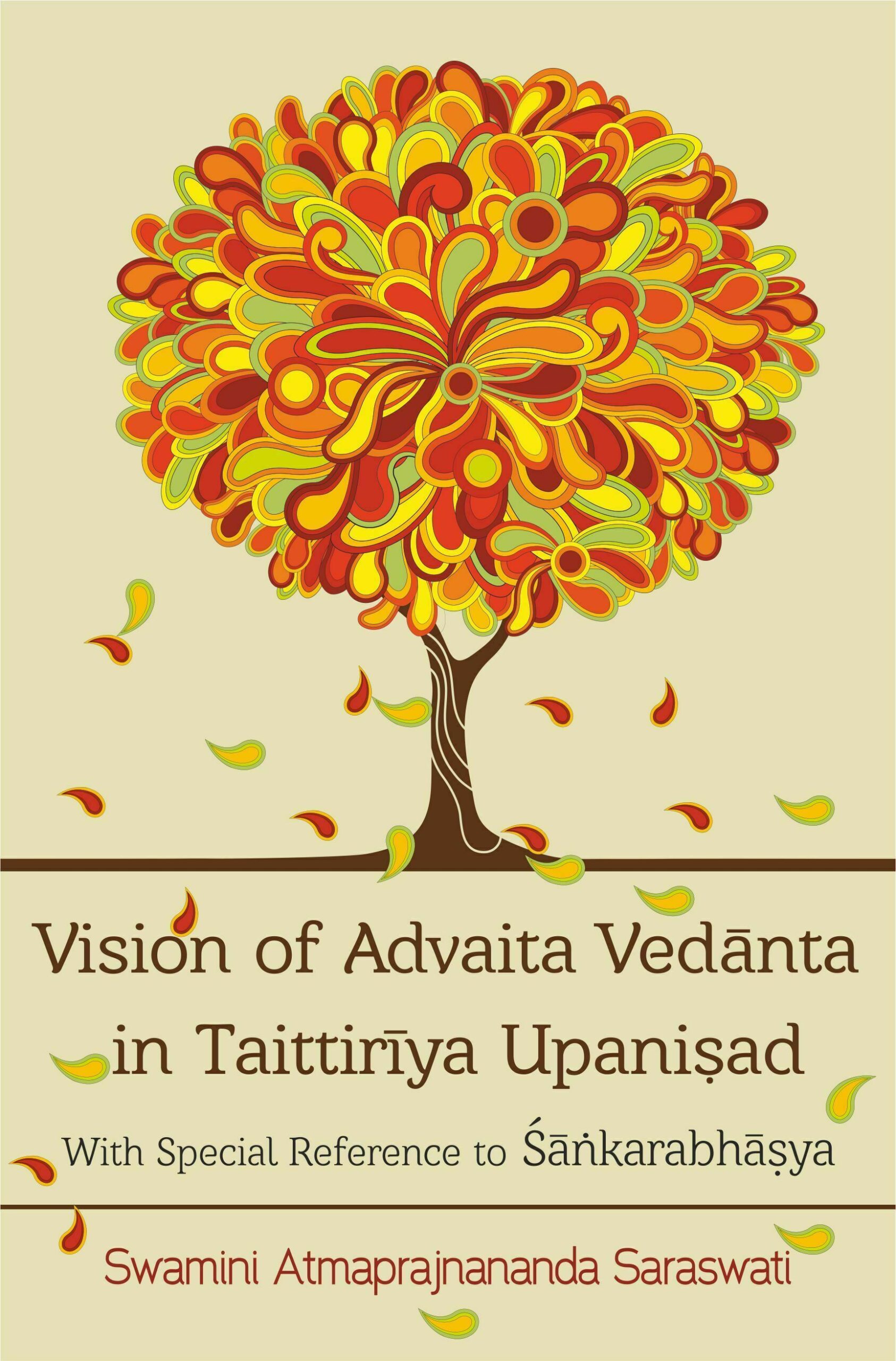

Vision of Advaita Ve...
Vision of Advaita Vedanta in Taittiriya Upanishad
With Special Reference to Shankarabhashya by: Swamini Atmaprajnananda SaraswatiThis book unveils the vision of Advaita Vedanta in Taittiriya Upanishad with special reference to Shankarabhashya in a unique style, detailing the importance of shabda-pramana, along with free translations of three vallis of the Upanishad. It presents the oneness of triangular phenomenon called jiva, jagat and Ishvara from the Advaita Vedanta perspective.
Original price was: ₹850.00.₹765.00Current price is: ₹765.00.
ISBN: 9788124608531
Year Of Publication: 2016
Edition: 1st Edition
Pages : xxiv, 280p.
Bibliographic Details : Bibliography, Index
Language : English
Binding : Hardcover
Publisher: D.K. Printworld Pvt. Ltd.
Size: 23
Weight: 550
This book unveils the vision of Advaita Vedanta in Taittiriya Upanishad with special reference to Shankarabhashya in a unique style. Upanishads are shabda-pramana, and this work adequately details the six pramanas, which hold the key to understand the significance of shabda-pramana, along with the five shanti-mantras in Taittiriya Upanishad. As the crux, it analyses Shankaras commentary Taittiriya-Bhashyam on Taittiriya Upanishad, enabling one to understand the deep layers of Advaita Vedanta in detail.
The core theme Vision of Advaita in Taittiriya Upanishad discusses the oneness of the triangular phenomenon called jiva, jagat and Ishvara. It delves deep into the method of deciphering the mahavakyas as well. While following closely the source literature, this volume attempts to detail the nuances of Taittiriya-Bhashyam. The approach of navigating the reader to the principal theme of Advaita Vedanta is expected to give him/her a good background. In ensuring this the volume provides relevant citations and informative explanatory notes. More importantly, it across three vallis Shikshavalli, Brahmanandavalli and Bhriguvalli provides free translations of Taittiriya Upanishad.
This elaborate and scholarly book is expected to add great value to students who wish to have a better understanding of the great Indian tradition called Advaita Vedanta.
Foreword
Preface
Acknowledgement
Notes on Transliteration
Abbreviations
1. Introduction to Vedanta
Indian Philosophical Systems
The Vedas
Apaurusheyatvam of the Vedas
Introduction to Vedanta
Knowledge of Upanishads Goes Outside India
Meaning of the Word Vedanta
Prasthanatraya of Vedanta
Difference between Veda and Vedanta
Subject Matter of Vedanta
Anubandha-Catushtaya
The Philosophy of Vedanta
Meaning of the Word Upa-ni-shad
Number of Upanishads
Taittiriya Upanishad
Significance of Taittiriya Upanishad in the Study of Vedanta
Brahman as the abhinna-nimitta-upadana-karana of the Jagat
Taittiriya Upanishad Quoted in the Brahmasutra
2. Concept of Pramana in Indian Philosophy
Pramanas in Indian Philosophy
Background of Pramana-Shastra
Pramanas as per Advaita Vedanta
Requisite Factors of Shabda-pramana
3. The Five Shanti-mantras in Taittiriya
Importance of Vedic Prayer
Vedanta and Worship
Difference between Upasana and Self-Knowledge
First Shantimantrah
Second Shantimantrah
Third Shantimantrah
Fourth Shantimantrah
Fifth Shantimantrah
4. Taittiriya-Upanishad-Bhashyam
Definition of Bhashyam
Shikshavalli: First Anuvaka (Futility of Karma)
Shikshavalli: Eleventh Anuvaka (Futility of Karma)
Brahmanandavalli: 1st Anuvaka (Srishtikrama)
Brahmanandavalli: 3rd, 4th and 5th Anuvakas
Brahmanandavalli: 5th Anuvaka and Bhriguvalli: 6th Anuvaka Parity (Anandamaya same
as Brahman?)
Brahmanandavalli: 6th Anuvaka (Anuprashnah) The Three Questions
Brahmanandavalli: 6th Anuvaka (Pravesha-shruti)
Brahmanandavalli: 8th Anuvaka
Brahmanandavalli: 4th and 9th Anuvakas (yato väco nivartante)
Bhriguvallé: 10th Anuvaka
5. Shikshavalli
Introduction to Shikshavalli
Summary of the Twelve Anuvakas
First Anuvaka: Shantimantrah
Second Anuvaka: Shiksha-shastrartha-sangrahah
Various Upasanas in Taittiriya
Personal Human Values (Antaranga-Sadhana) in Taittiriya
Endnotes
6. Brahmanandavalli
Introduction to Brahmanandavalli
Shantimantrah
Shantimantrah
First Anuvaka: Svarupa-lakshana of Brahman
Cosmology in Taittiriya: The Five Elemental Model and Their Sequence
Methodology of Teaching by Adhyaropa-Apavada Nyaya
Second Anuvaka
Third Anuvaka
Fourth Anuvaka
Fifth Anuvaka
Sixth Anuvaka
Seventh Anuvaka
Eighth Anuvaka
Ninth Anuvaka
Shantimantrah
Endnotes
7. Bhriguvalli
Dialogue as a Method in Presenting the Knowledge
Shantimantrah
First Anuvaka: Tatastha-lakshana of Brahman
Pancakosha-viveka as a Methodology of Teaching
Second Anuvaka: Anvaya-vyatireka method in arriving at the Truth
Third Anuvaka: Anvaya-vyatireka method in arriving at the Truth
Fourth Anuvaka: Anvaya-vyatireka method in arriving at the Truth
Fifth Anuvaka: Anvaya-vyatireka method in arriving at the Truth
Sixth Anuvaka: Anvaya-vyatireka method in arriving at the Truth
Anna-Brahman-Upasana
Seventh Anuvaka: Anna-Brahman-Upasana
Eighth Anuvaka: Anna-Brahman-Upasana
Ninth Anuvaka: Anna-Brahman-Upasana
Tenth Anuvaka: Social Values (Bahiranga-Sadhana) in Taittiriya
Shantimantrah
Endnotes
8. Vision of Advaita Vedanta in Taittiriya Upanishad
Vision of Advaita Vedanta
The Advaita Vedanta Philosophy
Brahman Alone Is Real
Doctrine of Jagat Being Mithya
Doctrine of Maya before Shankara
Shankaras Mayavada
Doctrine of Maya Different from Shunyavada Buddhism
Doctrine of Maya Different from Vijnanavada Buddhism
Maya of Shankara Is not the Same as of Samkhyas
The Three Orders of Reality
The Orders of Reality
Various Theories about the Reality of Jagat
Various Khyatis in Indian Philosophical Tradition
Maya, Avidya, Ajnana, Prakriti and Adhyasa are Synonyms
Characteristics of Maya or Avidya
Maya: A Statement of Fact
Two Powers of Maya: Avarana and Vikshepa
Avarana (Power of Projection) and Vikshepa (Veiling Power)
Two Modes of Maya: Samashti and Vyashti
Upadhi
Ishvara as Defined by Shankara
Jiva
Essential Nature of Atma
Brahman Is None other than Yourself: Atma
9. Mahavakyavicara in Taittiriya Upanishad
Oneness of the Jiva and Brahman
Tatparya-Nirnaya
Mahavakya-Vicara
Types of Vrittis
Types of Lakshanavritti
10. Shankaras Refutation of Other Philosophical Systems
Refutation of Purva-Mimamsa
Refutation of Bhatta-Mimamsa
Refutation of Samkhya
Refutation of Nyaya
Refutation of Vaisheshika
Refutation of Yoga
Refutation of Shunyavadi Buddhism
Refutation of Sarvastivada (Realism) Buddhism
Refutation of Vijnanavadi Buddhism
Decline of Buddhism
Refutation of Jainism
Refutation of Carvakas
Various Theories about the Causality of the Universe
11. Prakriyas in Taittiriya
Methodology of Teaching by Adhyaropa-Apavada Nyaya
Pancakosha-Prakriya: Analysis of the Five Levels of Experience of Oneself in Taittiriyopanishad
Anvaya-vyatireka Prakriya
Shrishti-Prakriya or Karana-Karya-Prakriya
Glossary of Vedantic Words
Appendix A
Appendix B
Bibliography
Index










